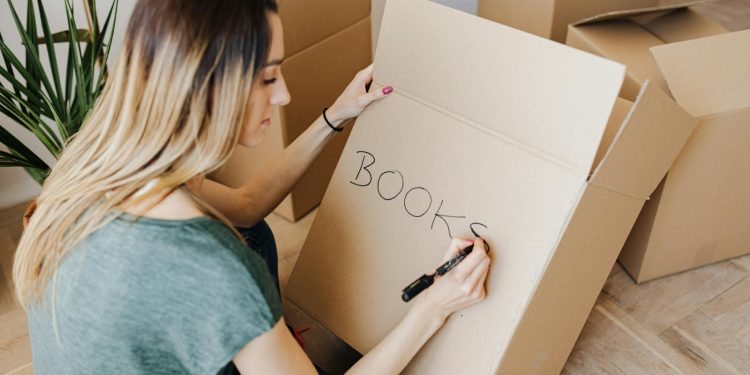Clutter has a way of sneaking up on us, and before we know it, our homes can become overwhelmed with items we no longer use or need. Decluttering your home can feel like a daunting task, but breaking it down into manageable steps can make the process easier and more effective. A tidy space promotes a sense of calm and reduces stress, creating an environment where you can feel more relaxed and in control. Here’s how to declutter your home in seven simple steps that will help you regain your space and your peace of mind.
1. Start Small: Tackle One Area at a Time
The idea of decluttering an entire home can be overwhelming, so it’s best to start small. Choose one area to begin with, such as a single drawer, a closet shelf, or your bathroom counter. Focusing on one small area at a time allows you to see progress quickly and prevents you from feeling overwhelmed.
Once you complete one area, move on to the next. Whether it’s a drawer in the kitchen or your desk, taking on manageable portions of your home ensures that you won’t burn out and will maintain motivation throughout the decluttering process.
2. Set a Timer for Decluttering Sessions
Decluttering can sometimes be more enjoyable and productive if you set a timer for each session. Instead of trying to declutter for hours at a time, set a timer for 15 or 30 minutes. During this time, focus solely on decluttering without distractions.
This method helps you stay focused, and knowing that there’s a set endpoint can make it feel less intimidating. You’d be surprised how much you can accomplish in a short burst of dedicated effort. Plus, the timer trick can make decluttering feel more like a game, which can keep the process light and fun.
3. Sort Items into Four Categories
To make decluttering more effective, sort everything into four main categories: Keep, Donate, Recycle, and Trash. As you go through your belongings, decide which category each item falls into.
- Keep: Items you use regularly or that bring you joy.
- Donate: Items in good condition that you no longer need but could be useful to others.
- Recycle: Items that cannot be donated but can be recycled, such as paper or old electronics.
- Trash: Items that are damaged or no longer usable.
Sorting your items into these categories makes it easier to see what you need to let go of and what’s worth keeping. It’s also a great way to ensure that unwanted items don’t go to waste if they can be donated or recycled.
4. Adopt the “One-Year Rule”
The “one-year rule” is a helpful guideline for deciding whether to keep or discard certain items. If you haven’t used an item in the past year, it’s likely that you won’t use it in the near future. Clothing, kitchen gadgets, and other household items that have been sitting unused for a year are good candidates for donation or recycling.
While this rule doesn’t apply to sentimental items, it’s effective for reducing the number of things you keep out of habit rather than need. Letting go of items that haven’t served you in a year can free up valuable space in your home and give you a sense of lightness.
5. Get Rid of Duplicate Items
Another common source of clutter is duplicate items. Many people end up with multiple versions of the same thing, such as kitchen utensils, blankets, or even tools. Go through your belongings and identify duplicates that aren’t necessary to keep.
For instance, if you have three can openers but only ever use one, it’s time to donate or discard the extras. Eliminating duplicate items not only clears up space but also makes it easier to find and use what you need.
6. Create a Donation Box
Keep a designated donation box in a convenient spot in your home. As you come across items that you no longer need, place them in the box. Once the box is full, take it to a local charity or thrift store.
Having a donation box on hand makes it easy to stay on top of decluttering even after your initial effort is complete. It encourages you to continually evaluate your belongings and let go of things as you come across them, preventing clutter from building back up over time.
7. Maintain a Decluttering Routine
Decluttering isn’t just a one-time task—it’s an ongoing process. To keep your home organized and clutter-free, establish a decluttering routine. Set aside time once a week or once a month to go through different areas of your home and remove items that no longer serve a purpose.
Developing a consistent decluttering habit ensures that clutter doesn’t build up again and keeps your living space feeling calm and organized. By making decluttering a regular part of your routine, you can maintain a clean, tidy home without having to do major overhauls every few months.
The Benefits of a Clutter-Free Space
Decluttering your home has numerous benefits beyond just having a cleaner space. It can reduce stress, boost productivity, and improve your overall sense of well-being. When your surroundings are organized, it’s easier to focus on what matters most, and you’ll find that you feel more in control of your environment.
By breaking down the decluttering process into these seven simple steps, you can create a more peaceful and functional space that enhances your quality of life. Remember, decluttering is a journey, not a destination—take it one step at a time, and enjoy the sense of freedom that comes with letting go of the unnecessary.














Discussion about this post